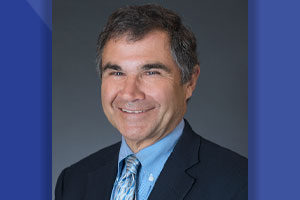The story of Warren M. Zapol, M.D., could easily be the subject of an award-winning documentary on Netflix. This legendary anesthesiologist pioneered advances in extracorporeal membrane oxygenation. He discovered a life-saving use for a poisonous gas. He even has a 14,000-foot glacier named after him.
ASA attendees don’t have to wait for the dramatic miniseries. This Sunday, the Lewis H. Wright Lecture will be delivered by Dr. Zapol himself, including a look at his work that proved inhaled nitric oxide was safe and effective as a selective pulmonary vasodilator.

Warren M. Zapol, M.D.
“I look forward to spreading the word that physicians all around the world should use nitric oxide for blue babies and acute respiratory distress syndrome,” he said.
Throughout his career, Dr. Zapol has earned countless honors and titles. He’s been called Mr. Adventure, Anesthetist-in-Chief Emeritus, Distinguished Scientist, Inventor of the Year and Antarctic Explorer. But the moniker Dr. Zapol values most is what sick babies grow up to call him – lifesaver.
7:45-9:00 a.m.
Sunday
W314AB
He began experimenting with lung function in the late 1960s at the National Heart Institute of the NIH. The extracorporeal membrane oxygenation (ECMO) system he tested with his mentor, Theodor Kolobow, M.D., on newborn fetal lambs became standard protocol for newborn infants in respiratory distress.
In 1970, Dr. Zapol became an anesthesia resident at Massachusetts General Hospital where he spent the entirety of his career. At MGH, he continued his ECMO studies and explored acute respiratory distress syndrome in both adults and children.
In 1989, Dr. Zapol imagined a better treatment for primary pulmonary hypertension of the newborn (PPHN) and set out to perform lamb experiments. His hypothesis was based on a future Nobel-Prize-winning discovery in physiology and a weather forecast he read in the Los Angeles Times. Proof that inspiration can come from anywhere.
Dr. Zapol tested breathing nitric oxide (NO) on a lamb with pulmonary vasoconstriction. It was a radical idea at the time because NO was considered a poisonous gas associated with acid rain. Dr. Zapol and his team wore gas masks while administering a small dose. Within seconds of inhaling NO, the lamb recovered.
“The gas opened the lung vessels up,” he said of the experiment that oxygenated the lamb without reducing the systemic vascular resistance or blood pressure. “Within a few minutes we knew it would be a ‘knock your socks off’ first experiment.”
After repeating the experiment successfully on seven more lambs, the research team requested a human studies trial in babies with PPHN. History was made when blue babies inhaled NO and became pink. Dr. Zapol’s “crazy” idea was on every neonatologist’s lips.
In 1999, the FDA approved inhaled NO for PPHN. Today, it saves around 25,000 infants every year in the U.S. Off-label uses benefit many more adults and children who suffer from acute respiratory distress syndrome and other pulmonary hypertension disorders.
Dr. Zapol continued to seek methods that would make NO inhalation therapy more affordable and accessible for the medical community. NASA sparked the idea for his next invention. One of their planes flew through a lightning bolt which produced NO from air. If NASA could make NO with an electric spark, Dr. Zapol believed he could, too.
It was an invention well worth pursuing. Cylinders of NO are expensive and cumbersome, costing up to $14,000 per infant. Dr. Zapol and his research group developed a portable generator that could produce NO from an electric spark. Today, Dr. Zapol collaborates with his son David Zapol’s company, Third Pole Therapeutics, to create even lighter and smaller electric NO (eNO) generators. They recently gained U.S. patents for their products and intend to bring them to market over the next 18 to 24 months.
Dr. Zapol envisions a world where eNO is available quickly and easily at hospitals, clinics and even in homes.
“There are many countries across the globe that cannot afford nitric oxide,” said Dr. Zapol. “And I have no doubt there will be more conditions for which inhaled NO will prove to be a valuable, perhaps life-saving, therapy.”
Return to Archive Index